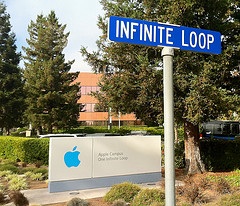Booz: corporate culture is a key factor in successful innovation

For the past seven years, management consulting firm Booz and Company has identified the 1,000 public companies who have spent the most on research and development in the previous year. And in that near-decade of research, Booz has consistently shown that there is "no statistically significant relationship between financial performance and innovation spending, in terms of either total R and D dollars or R and D as a percentage of revenues," as reported in the forthcoming Winter 2011 issue of Strategy and Business, a quarterly magazine published by Booz.

Apple, for instance, voted as the most innovative company in the world by nearly 600 international corporate innovation leaders that Booz polled, ranks 70th on the list of top R and D spenders, and its investments in R and D equal 2.7% of the company's sales. Compare that to the number-one R and D spender, pharmaceutical giant Roche Holding, which spent $9.6 billion in 2010 R and D, or 21.1% of its sales.
But that’s not all that Booz discovered.
For the latest edition of its Global Innovation 1000 list and report (available as a PDF), Booz focused on the theme of internal corporate culture and its relationship to profitable invention. They found that
- 36 % of all respondents to the survey admitted that their innovation strategy is not well aligned to their company’s overall strategy
- 47% said their company’s culture does not support their innovation strategy
- companies with both highly aligned cultures and highly aligned innovation strategies have 17% higher profit growth than companies that reported low degrees of alignment
- The most important innovation goals among respondents are “superior product performance” and “superior product quality,” each ranked number one or two by a plurality of more than 40% of all respondents
- In terms of their cultures, companies share traits even if executives don’t find that their cultures are aligned with innovation. More than 60% cited “strong identification with the customer” as among the top two cultural attributes of their organization, and 50% chose “passion for and pride in products.”
The Booz report also offers advice for executives who seek to see a better return on their R and D investments. The report’s authors, Barry Jaruzelski, John Loehr, and Richard Holman write that “the larger lesson for companies that struggle to convert their R and D expenditures into successful products, solid financial returns, and unassailable market positions is that it may not just be traditional factors like the innovation pipeline that need rethinking.”
By looking at the data they present, it seems that nurturing a creative culture of innovation, regardless of R and D budgets, may be the not-so-secret-sauce behind successful new products and services.
Images: TheImageGroup/Flickr; Mike Turner/Flickr
This post was originally published on Smartplanet.com
